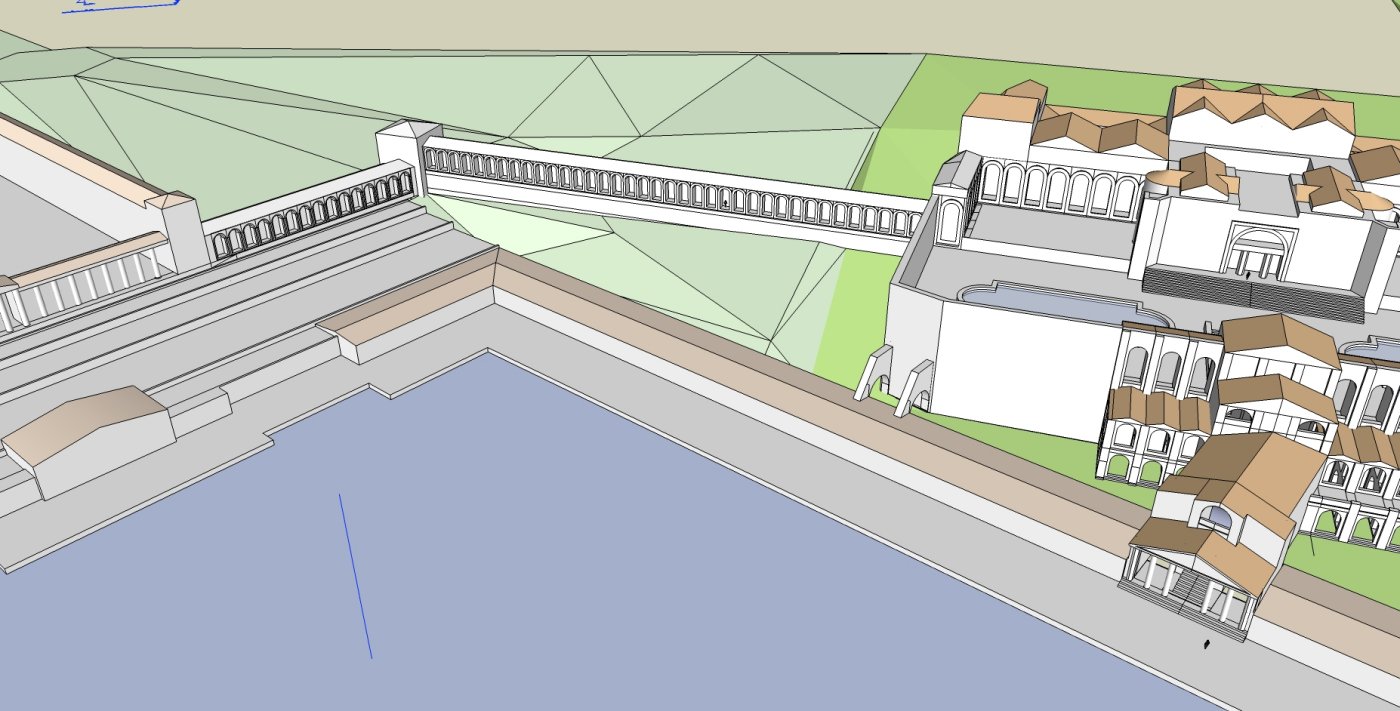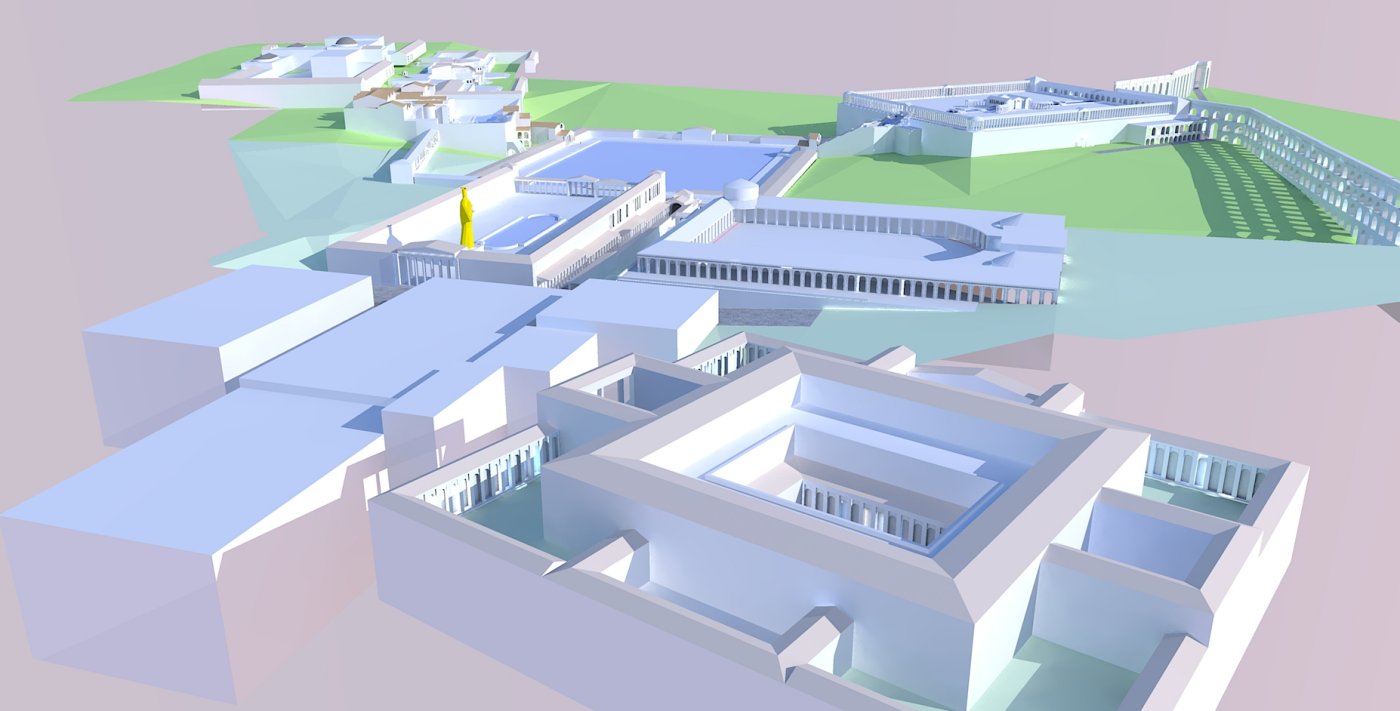Yes, that's tricky. Of course I will include it in the Domus Transitoria, but what is it? It's too luxurious to be a service criptoporticus. And the explanation that some domus had a summer underground residential section doesn't convince me. So I was trying to imagine at least une quarter open on a garden, the slope allows for that towards the forum. Seneca was living in a marginal part of the Transitoria, overlooking the Meta Sudans, so it should reach that. And Svetonius says the Transitoria was at least intended to link up with the Ortii Maecenati, so it should extend that way over the Velia and towards the Oppio hill. And what part of the Tiberiana was standing at the time, and how was it connected to the rest? Lots of guesswork ... 
Posts
-
RE: Build Rome
-
RE: Build Rome
Never mind, Fluffy. It's messsy anyway.
This is a try at the tower/ramp. It looks quite odd, so near to the arc of Titus, but this is the plan of the excavations, it really looks as an annex to the temple base. Any suggestion welcome.
I'll have to work at the termae at the back of the tower next ...
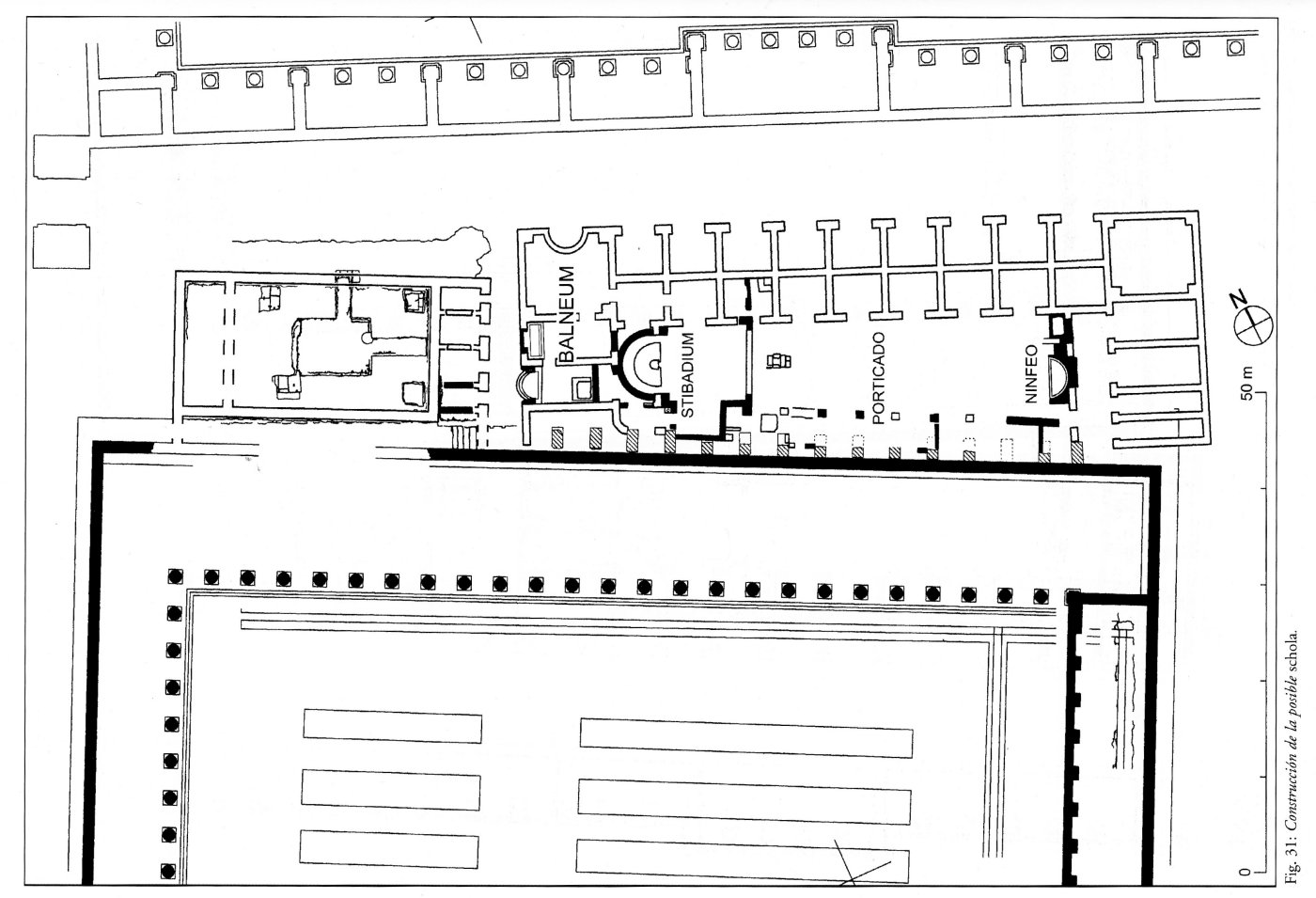
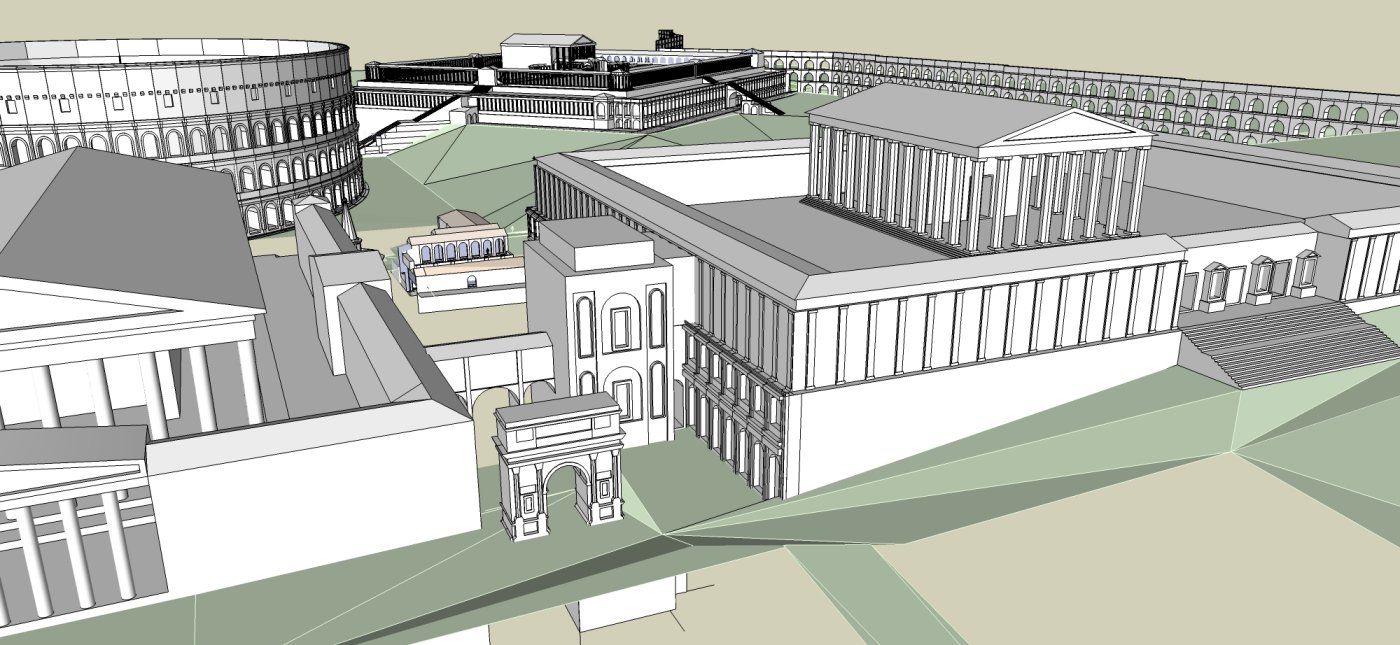
-
RE: Build Rome
Thanks,Elysium. I didn't know that Herculean tower. But there is a strong continuity of craftsmen and typology between late roman and early moorish architecture, that image underscores the similarity with the Giralda.
For the rest, it's guesswork. With three points. First, I always thought that Nero and successors would design internal pathways to go from one part of the palace to the other. They built huge cryptoporticus to have the service traffic go its way without interfering with the emperor and friends, and then to go from the atrium to the cenatio the boss had to walk out into the clivus and go the round way mixing with heavy commoners traffic ... I don't think it makes sense.
Second, the name Torre Cartularia is medieval, in those times it was a tower (surely dating from roman times) and was used as a storage building for church rolls and records. A ramp would do fine, with shelves along the walls. The remains are dated, as far as I know, with Elagabalus, along with the termae at its base. But it could well be the reproposition of something much older.
Third, I think the remaining structure can be explained with a ramp, like in the scheme I enclose. Have a look at this other Google image, what else could those spokes be?

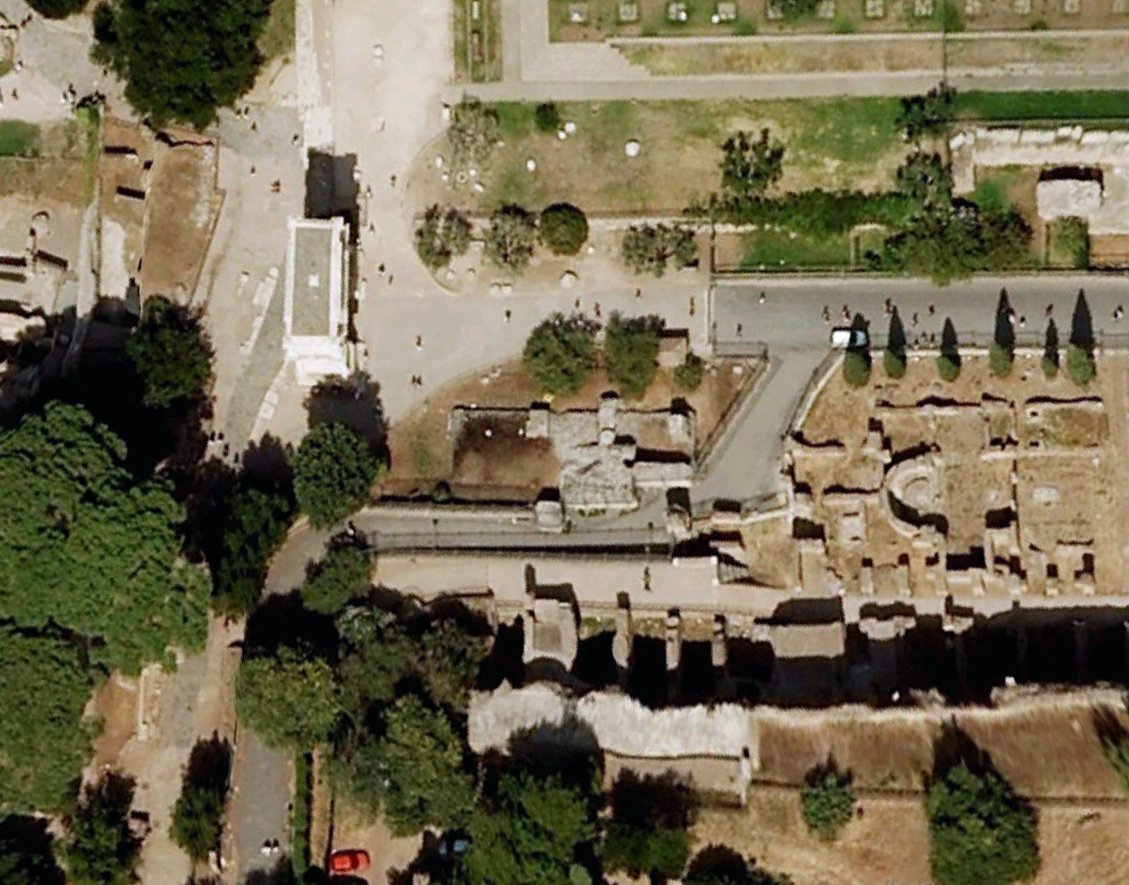
-
RE: Build Rome
To complete the answers to Elysium, the red dot marks the site of the cenatio rotunda. The great circle marked by 3 in the map is quite flimsy, something like a circular wall to a garden or something like that.
The torre cartularia is an intriguing structure between the temple of Venus and Rome and the temple of Elagabalus. The remains are scarce, but impressive, a huge concrete cube, or prism, with two axes within a rectangular plan. It makes me think of an ascending ramp. Romans didn't have elevators, and their equivalent was a ramp that could be used with horses or stretchers. I was thinking of la Giralda in Seville, it's something like that. This is my first try, WIP ...
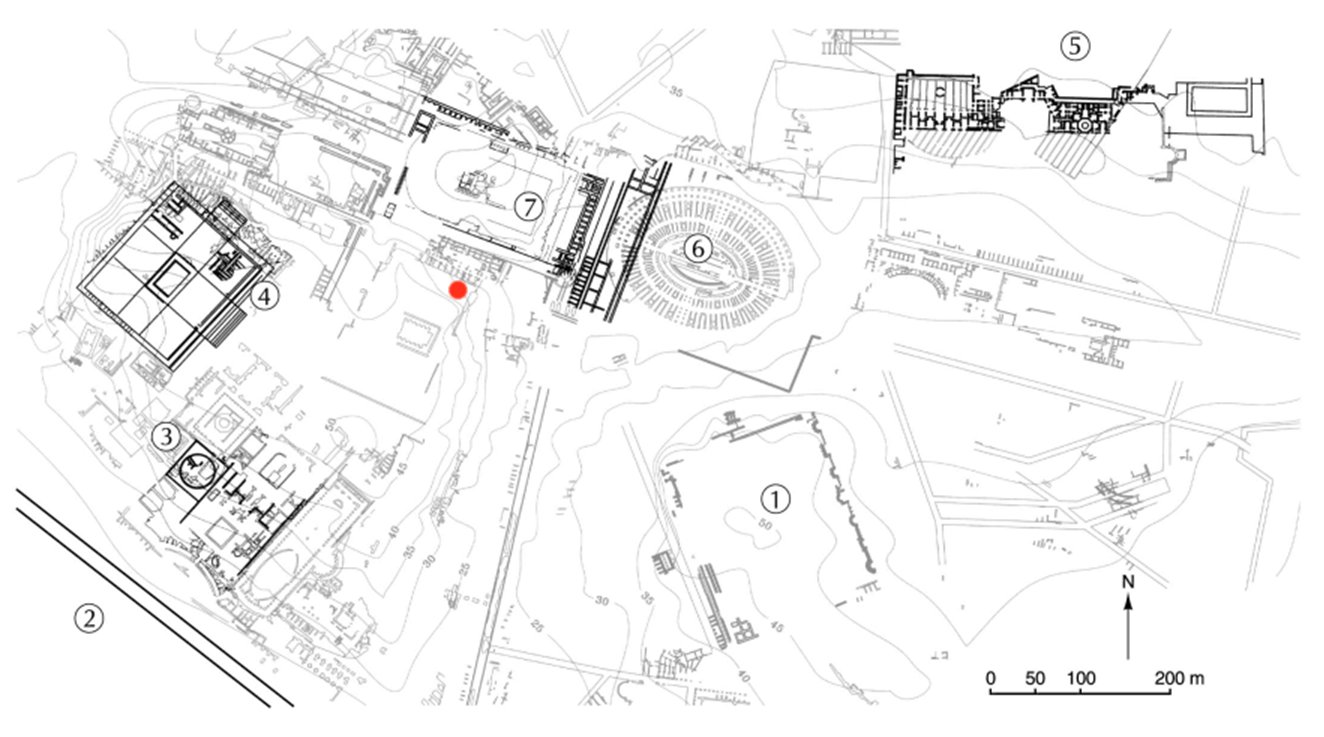
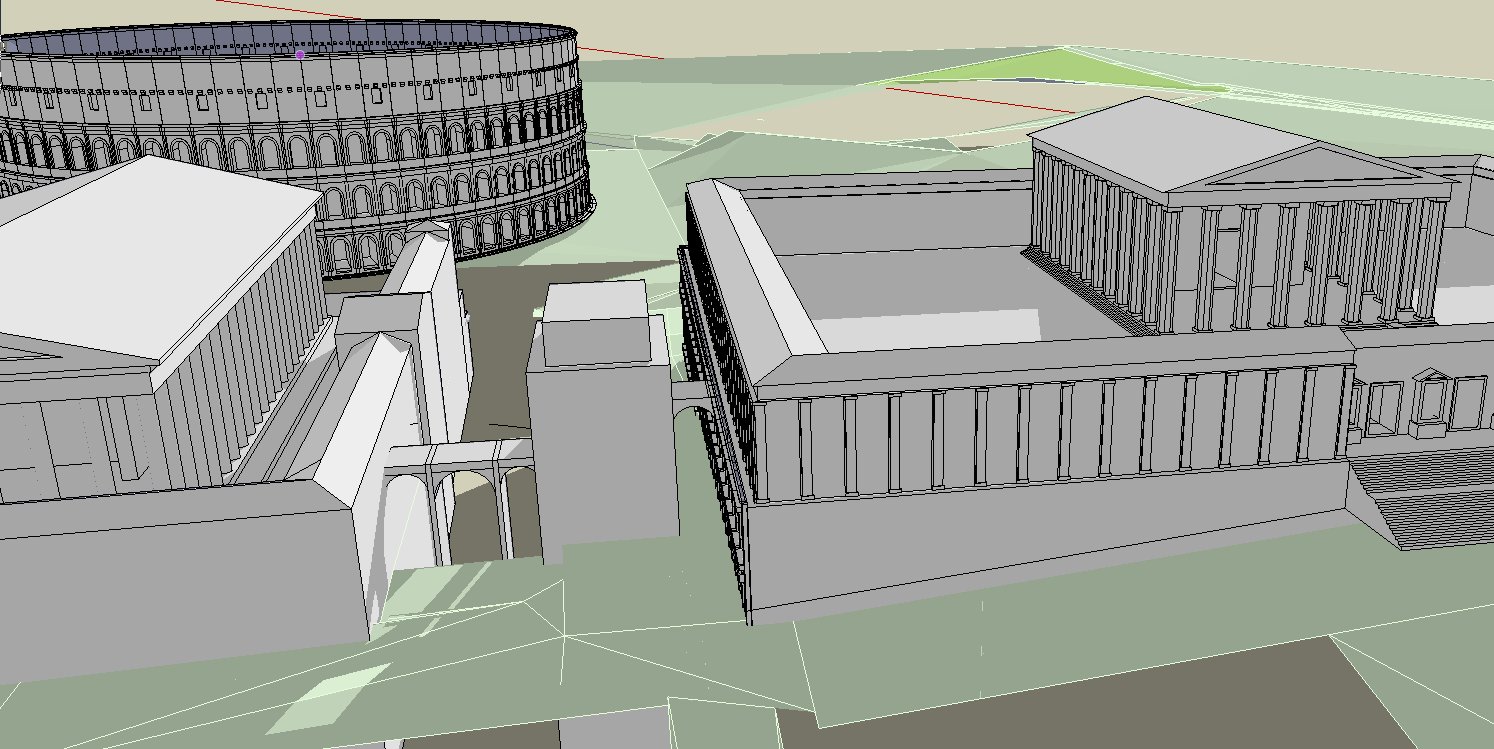
-
RE: Build Rome
The map with numbers that Elysium posted is a map I drew some 20 years ago. Nice to see it's still circulating.
As for the cenatio rotunda, here go two photos I took, that are a bit clearer, but it's difficult to take it all in. The diameter is 16 meters, quite huge. In the reconstruction from Nero's show you'll see that the guys think of it as a self standing structure, tower like. For several reasons I don't agree. For one, to climb into a rotating tower you need a larger surrounding platform without obstacles, to avoid the guillotine effect between static and moving sections. So I believe that it would look something like this. Not sure it is the cenatio rotunda mentioned by Svetonius, but it's a good guess, the sight from there must have been breath taking. It's not clear how it could have worked, though. Sort of a merry go round in wood, but why the huge brick tower underneath? It looks like a bit of overkill ...
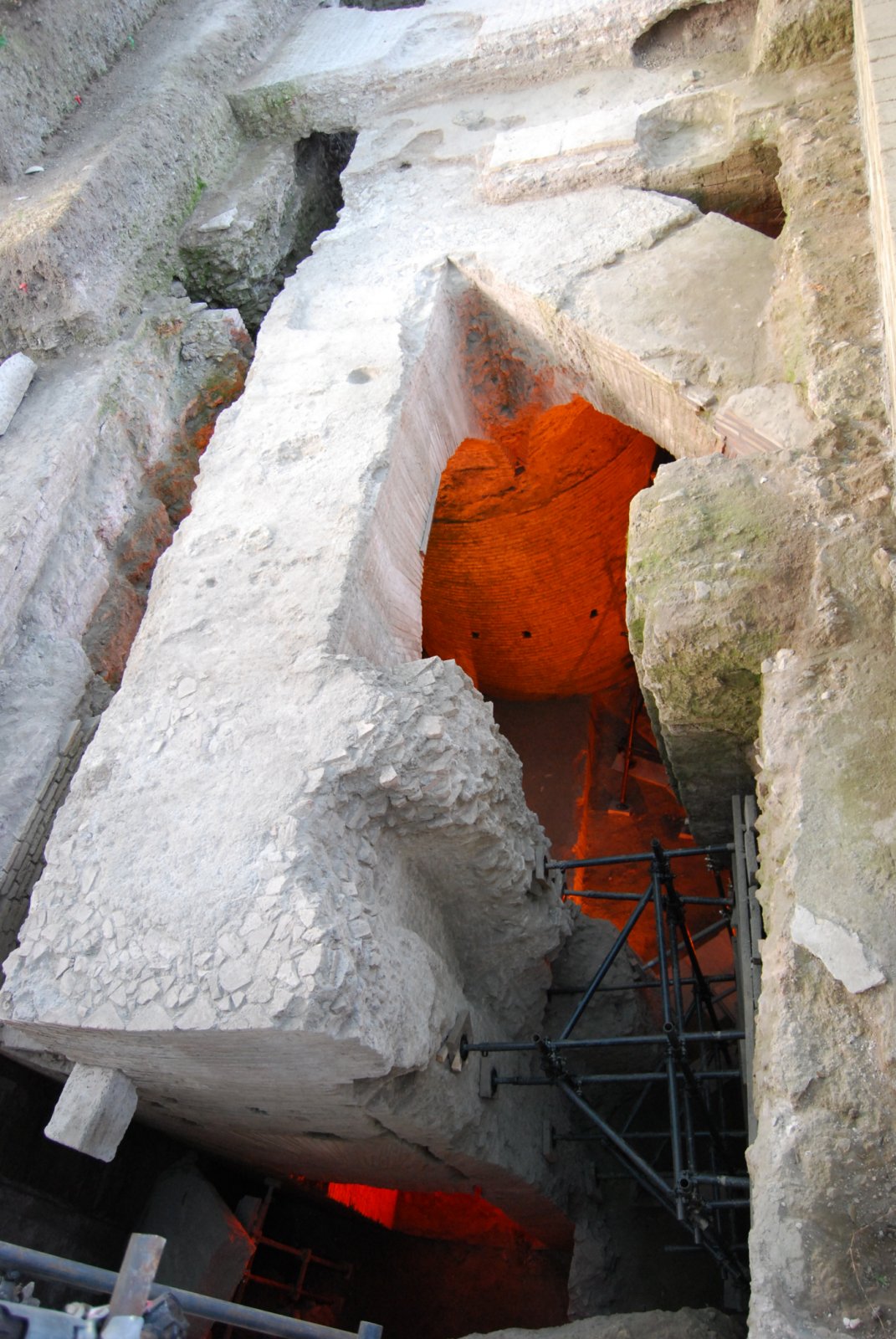
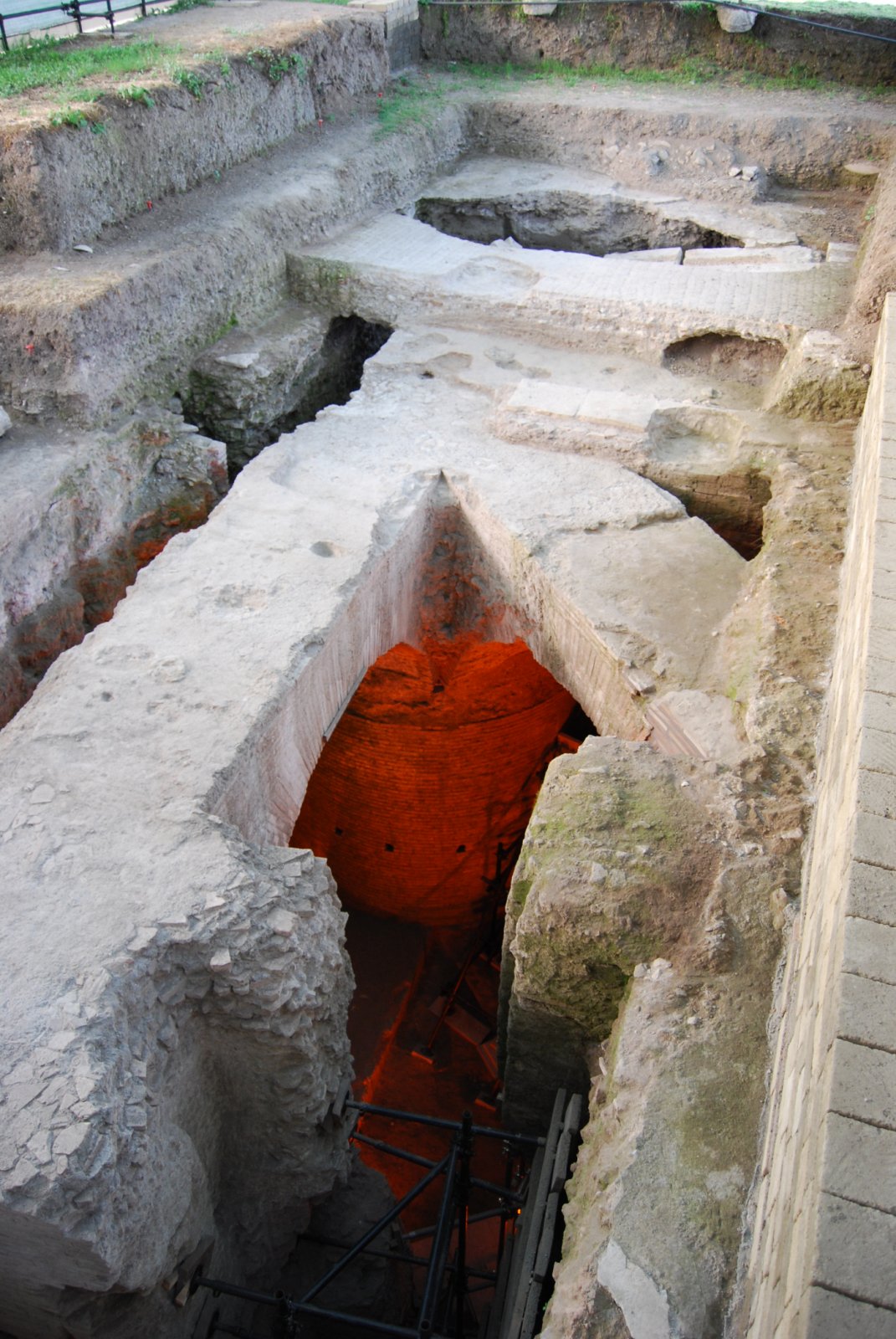
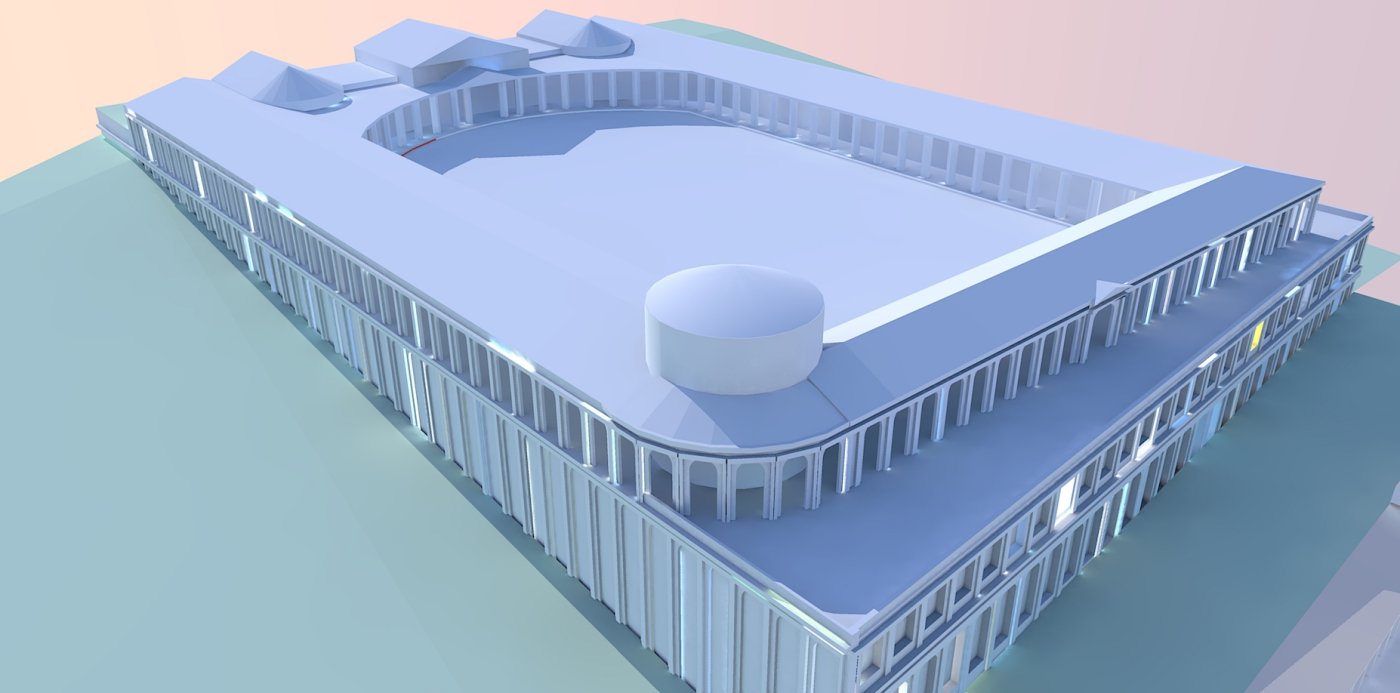

-
RE: Build Rome
The two authors, Borghini and Carlani, are very bright, but much better at interiors than in overall views. I gave them my work to think over, but they were hard pressed for a deadline (the show opened yesterday, april 11th) and they only partly used it. There are several things I don't like, mainly the arrangements on the Vigna Barberini and the cenatio rotunda. In Nero's time the Claudianum was a nimpheum, and the temple of Claudius was reintegrated later by the flavians, and so on. As a matter of fact in the final version they incorporated some more of my suggestions for the claudianum, the acqueducts, and for the connections between the lake and the termae of Titus and the Claudianum, that are not shown in this shot. All in all they are great guys, and doing a fine work, even if in evolution. The video they made for the baths of Liviae is impressive.
As for my work, here goes the temple of Elagabalus. I am intrigued by the Torre Cartularia, maybe it was an access ramp with a bridge connection between the Atrium and the Vigna Barberini, who knows. I'll give it a try to see how it could look like ...
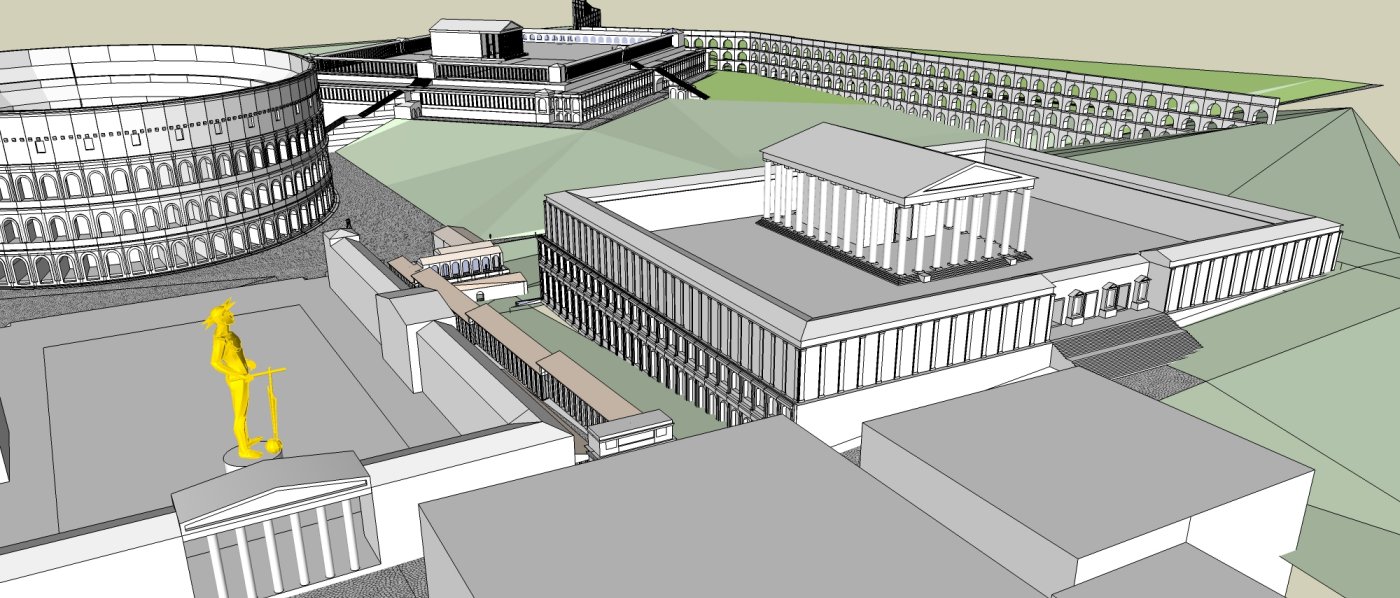
-
RE: Renders of Roman Theatre of Cartagena (Work In Progress)
I am scanning some old (very old, about 40 years ago) photos from Bosra, that might be of some help. I think it is one of the very best preserved roman theaters. Bosra is in the basalt belt, most stones are basalt, which is black and unattractive, but incredibly tough, so the details look brand new, no time related erosion at all ...
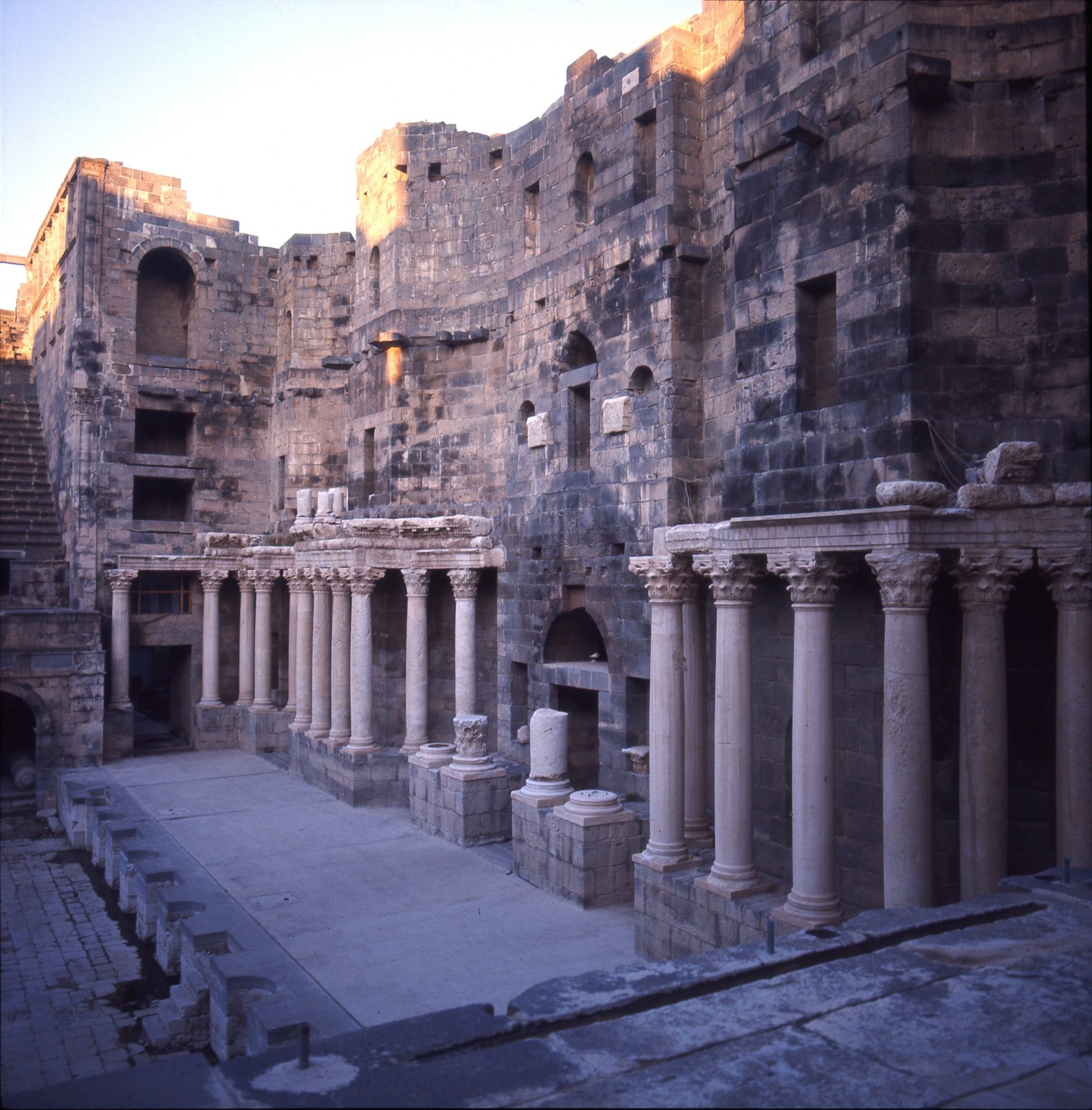
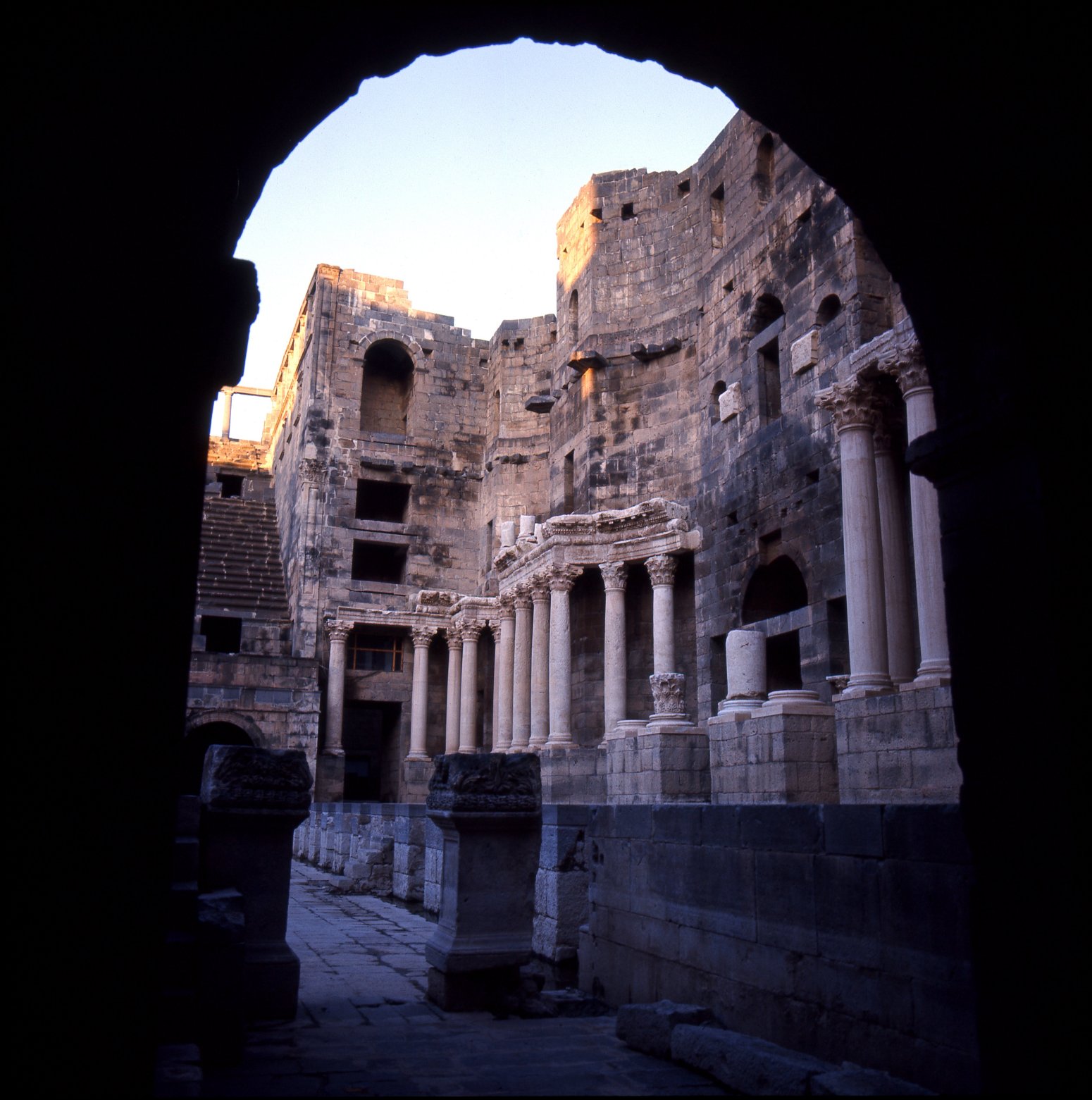
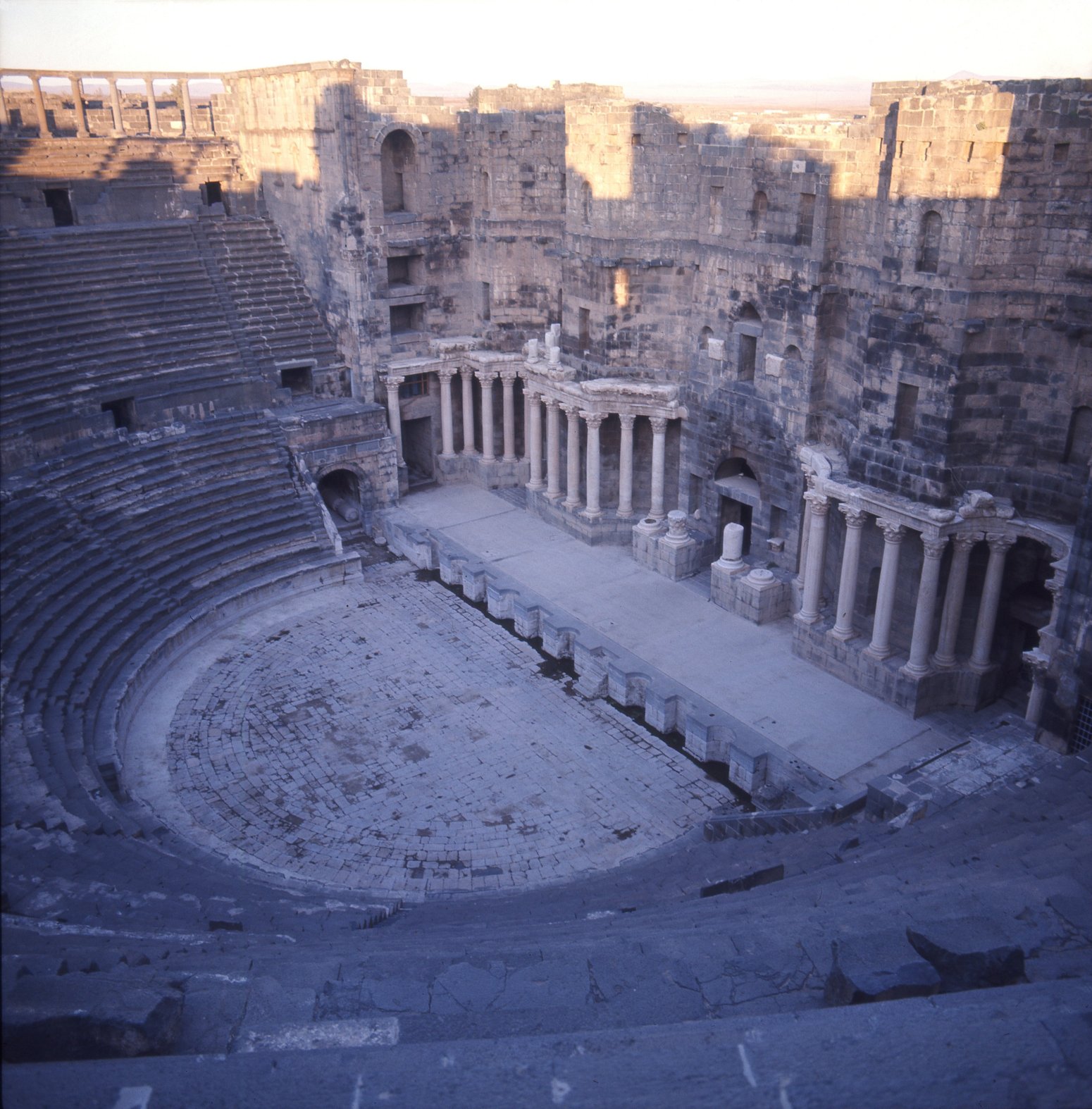
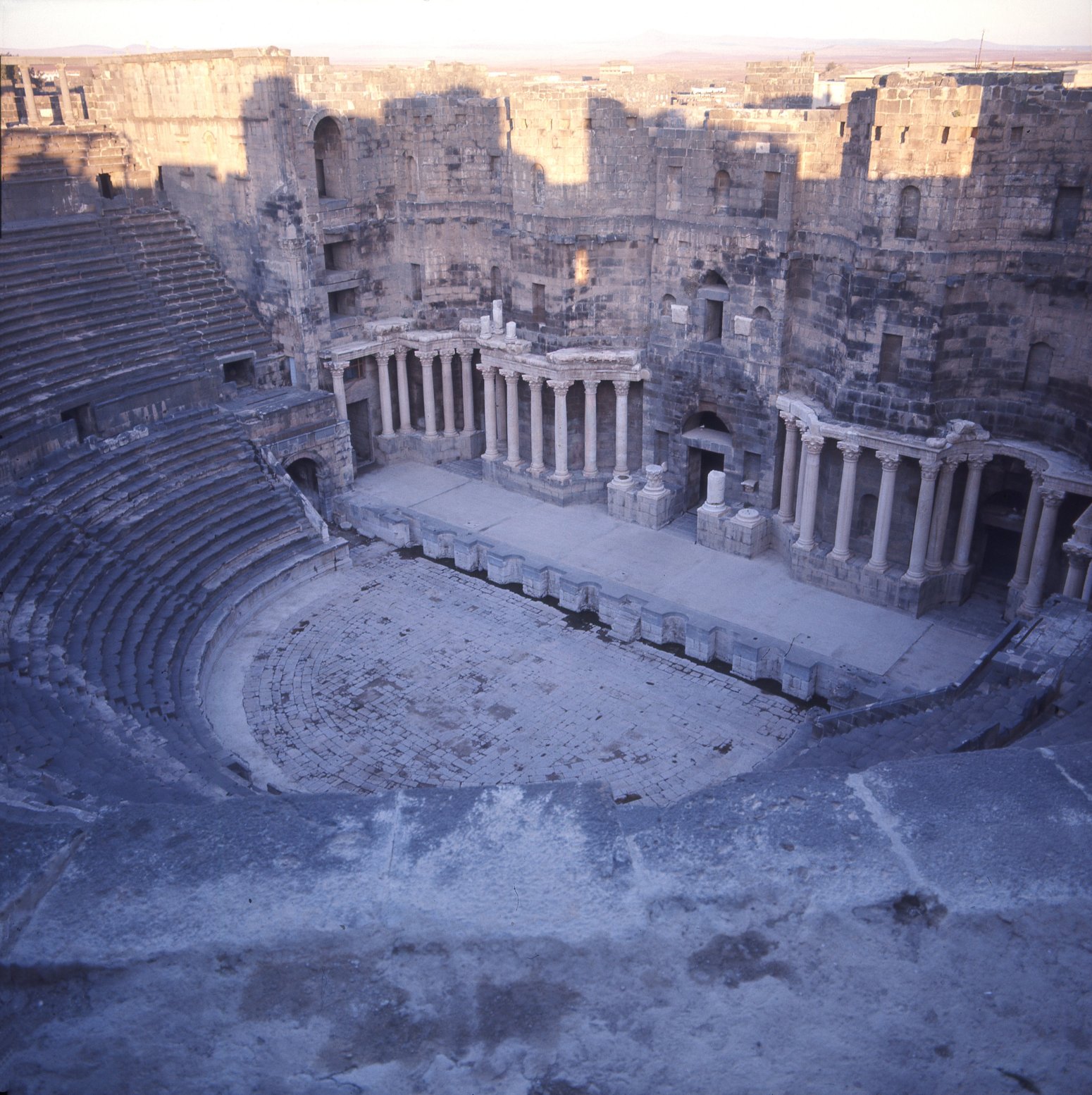
-
RE: Build Rome
Thanks, Pichuneke. I'll certainly use that, it looks great.
I am working at the situation of the valley in the moment before the fire of 64 AD. It's not easy, I am collecting existing data, which is mainly floor plans, and putting it toghether. We know the area was very crowded, the streets were narrow, and we have some data about the overall scheme, but we also know that the buildings went up for 7 or 8 floors, mainly wooden over the lower 2 or 3 in masonry. But the rest is quite fuzzy. The area of Venus & Rome was at least partly occupied by Nero's Domus Transitoria, but what it looked like is mainly guesswork ... Well, I'll give it a try ...
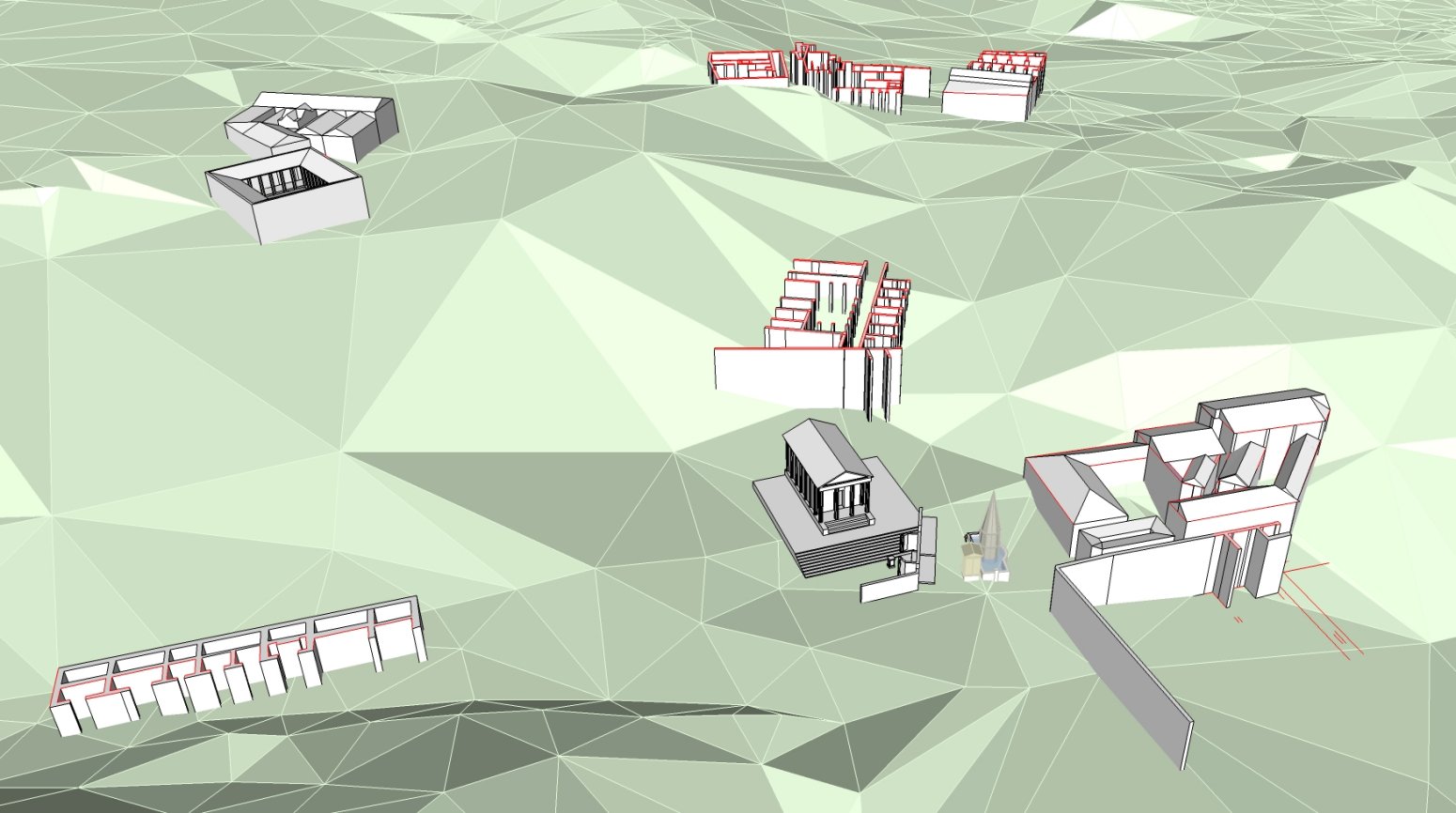
-
RE: Build Rome
Well, I've been off for awhile. I have another fixation, on the war of Paraguay (1864/1870). I had been looking for the final report of the italian consul, stabbed to death as he was writing it in march 1870. It wasn't in the archives of the Ministry, and I had lost hopes, and then I managed to get in touch with the family, and got it, bloodstained fingerprints and all. I am still transcribing it, not an easy job.
Well, back to ancient Rome. I received some sensible criticisms about the lakefront of Nero's atrium. 1) my solution interfered with the lake view from the Atrium; 2) you had to have an access to the lake from the Atrium without having to go down to the covered road used by commoners; 3)the lakefront was too important to just think of it as a boatshed.
So I tried this solution. The building on the lakefront is quite small and low, sort of a super gazebo, but I think it fits in the situation, and if it was any higher it would cut the view.
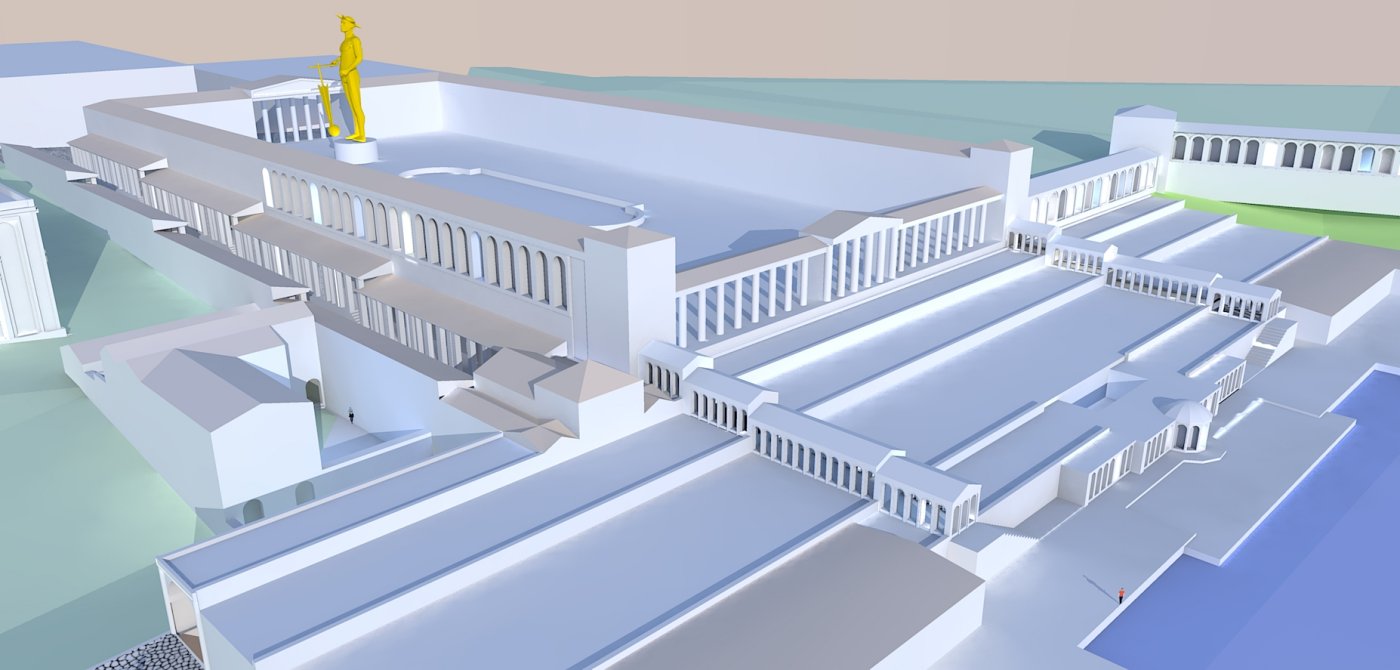
-
RE: Happy New Year
I am not too exacting, I wish just a slightly better one than the last ....

-
RE: Build Rome
I enclose a translation of the comment in the video, for those (most of you, I believe) who don't understand italian. Besides the fact that my wife had a terrible cold the day she dubbed the images.
****
The archaeological excavation; from research to the transmission of memories
Northwestern slope of the Palatine hill.
31 may 2010, the archaeological site of the "Sapienza" University reopens for its yearly campaign.
This excavation is both a great research and scientific project, and a teaching and formative experience.
Day one.
An excavation is mainly, as yet, a manual activity; it implies handicraft, care, attention to detail, keen observation; but also
and above all a discerning mind, knowledge and culture. It's the time and place where different specialisms and kowledges meet and confront each other.
It is necessary to disassemble to understand, and reassemble to inform.
The excavation is by itself destructive, but compensates through the documentation drafted, through study, through attempts to reconstructions, and through the transmission of memory.
Side by side with the gathering of a huge amount of documents, evidences appear over the landscape about urban, topographical, and architectural organizations.
The excavation is also an act of creation, that reshapes the land step by step, bringing out, through a removal, unforeseen new landscapes.
And giving voice to things, and to the men that have produced, used, broken, lost, discarded, recovered and reused those same things, is also an act of creation.
But what kind of memory on this extraordinary section in the heart of the ancient city can we keep, and explain to others after 25 years of work?
We tell the story through images, starting with the way the original landscape looked, and with its transformations through time, with roads, settlements, worship sites.
To this very early phase belong some roads we identified through the excavation. The path that starts from where the Circus Maximus once stood, and from there winds towards the Forum, is the same path followed by all the main religious and civilian manifestations, first of all
by the triumphal marches.
This path also marks the boundary of one of the two worship sites we found, that we can arguably identify as one of the four corners of the pomerium, the sacred boundary of the original settlement that legend attributes to Romulus: the Curiae Veteres, the ancient assembly hall.
Facing it, on the road that climbs towards the Forum, the second sacred area also dates back to the foundation era.
The presence of these two sites deeply affects the organization of this part of the city, up to the moment of the disastrous fire at the start of Nero's reign.
Around them, in the republican age, high class residential buildings are raised and enlarged, in line with the centrality of the area, so near to the Forum and to the centers of power.
The presence of the Meta, a sort of signpost of the sacred boundary, brings us to the Augustean age, and to the great works of the Julio Claudians.
The same sign will be reinstated, after the destruction of 64 AD, by the Flavian emperors. And this act is proof of the ideological, symbolic, and sacred meaning (in addition to its topographical and urban function) of this monument, and of the worsip area facing it.
Breakpoints and great transformations mark the first imperial era. We found and recovered impressive traces of Nero's fire.
And just as impressive are Nero's constructions in the valley, organized, along the rest of the royal house (the Domus Aurea) around the central lake.
Landfills, great earth movements, cuts through the hill slopes, define new spaces and volumes that bear no relationship with the ancient organization.
But the project doesn't last, and within a completely altered cityscape the projects and buildings of the new emperors will find their place.
The Flavians see and show themselves as the great restorers. They rebuild the Meta fountain, and by its side a small temple inserted into a large space defined by Nero's architects on the slope of the Palatine hill, and reuse a terrace that in Nero's project masked the dislevel between valley and hill.
The underground rooms that are below this terrace become the annexes to the small temple, and by their size appear to us as the fossil remains of another world, and of the spirituality of a past age, that survive for centuries without variations, while huge monuments are raised at its sides and in
front of them.
For a chance of destiny, in one of the underground rooms of the terrace of Nero's and Flavian times, the ensigns of an emperor, probably Maxentius, will be buried and hidden in the morning of his defeat at the Milvio bridge.
Just a few meters separate the place of this hidden throve from the arch dedicated to the man that defeated him.
And lastly, the transformations of late antiquity, that in our area can be seen in a building that also has a long story of transformations and reuse, but that appears to have survived without too many structural variations, while around it a slow decadence affected the margins of the Palatine towards the valley.
The graveyards of the end of the VIth and beginnings of the VIIth century close the ancient story of this building, and of the entire neighborhood to which it belonged.
23 of july. Last day of the last campaign, at least for the time being.
On the screen the list of names of the students who participated in the campaign of 2010. -
RE: Build Rome
Well, the show went well, not much attention from the press though. The worst glitch came from the projector that didn't work, so we couldn't show the film that had cost Tina several days and nights to put toghether. So I placed it on Youtube and here it is. The two animations are made with Kerkythea, but one is jumpy and the other is rather smooth. I think that's because the jumpy one is straight from acquisition, and the smooth one was compressed to about half the original duration. I made a mistake in the path of the triumphs, the contour lines get messed up, I will replace that with a simply shaded terrain ...

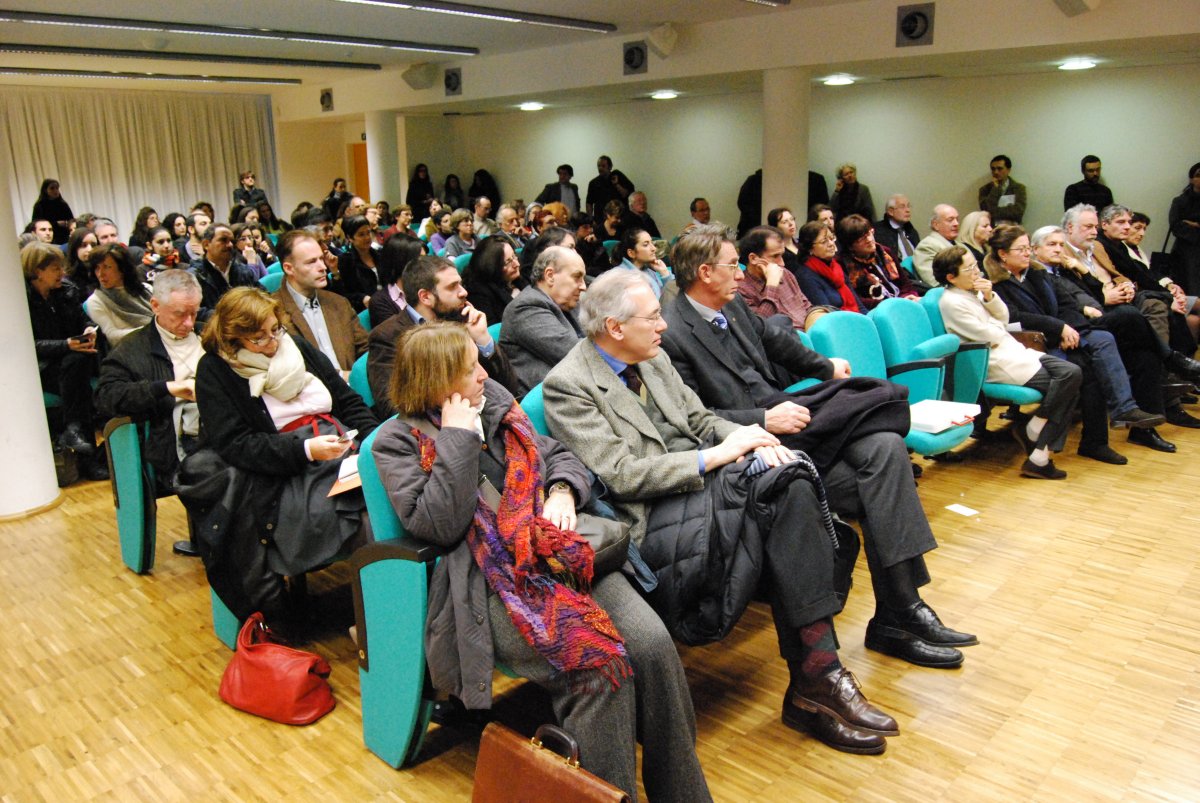
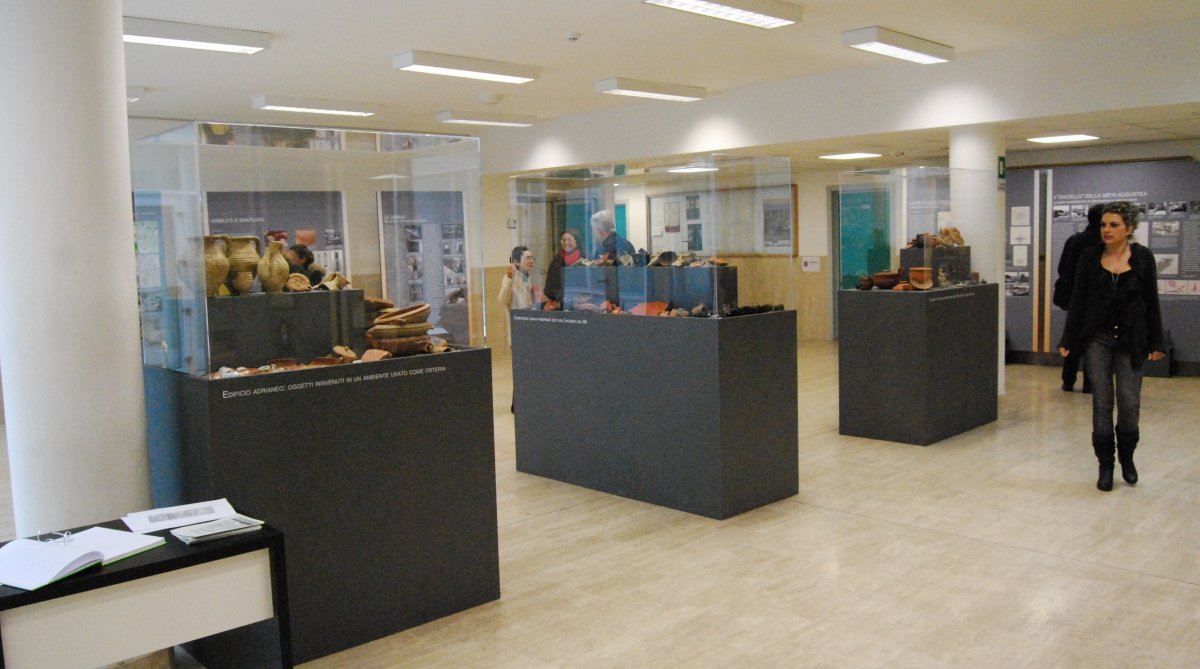

-
RE: Great animations
I am a newbee too, but fighting with more or less the same issues. I had some decent results by exporting to Kerkythea with scenes already arranged in SU for camera positions, creating a walkthrough in Kerkythea (there's a good tutorial for that). Kerkythea saves a sequence of Jpegs from the walkthrough, that can be assembled with a free software called Virtualdub to produce an .avi or other video formats. Then you have to assemble the whole thing in a larger film. I use Nero Vision 10 for that (some 80$ to buy) , but I am still jumbling with commands and options ...

-
RE: Build Rome
Ok, tomorrow the esposition of the 25 years of excavation in the Valley of the Coliseum should open, and I've been going crazy with things I don't know. Building models in SU, transferring them to Kerkythea for rendering and walktrough, then to Virtualdub for putting up the .avi sequence, ant finally assembling the whole damned thing in Nero Vision 10. I am just too old for this hassle. It's all rather straightforward once you know where to put your hands, but I lost days looking for the d... functions and scrolling through the faq's of the different forums ...
Next days I'll tell you how it all went.
The symbol of the show turned out to be a Sun god I put toghether in a hurry with Poser, with a ship rudder in his hand and a ball I suppose represents the oceans, or the sky sphere. Rudder and crown were made in SU and imported to Poser. The representation is true to the image that appears on Nero's coins. Any way I look at it, the roman ship rudder looks like an umbrella, and the sun god resembles Mary Poppins, but what can I do? Besides, the organizers (most of them women, including the boss - my wife) protested that his other attributes were too large ... some of them proposed to blur them out ... They say that one large image will be pasted on the entrance door with his attributes at eye level, putting them in prime evidence ... Oufff!
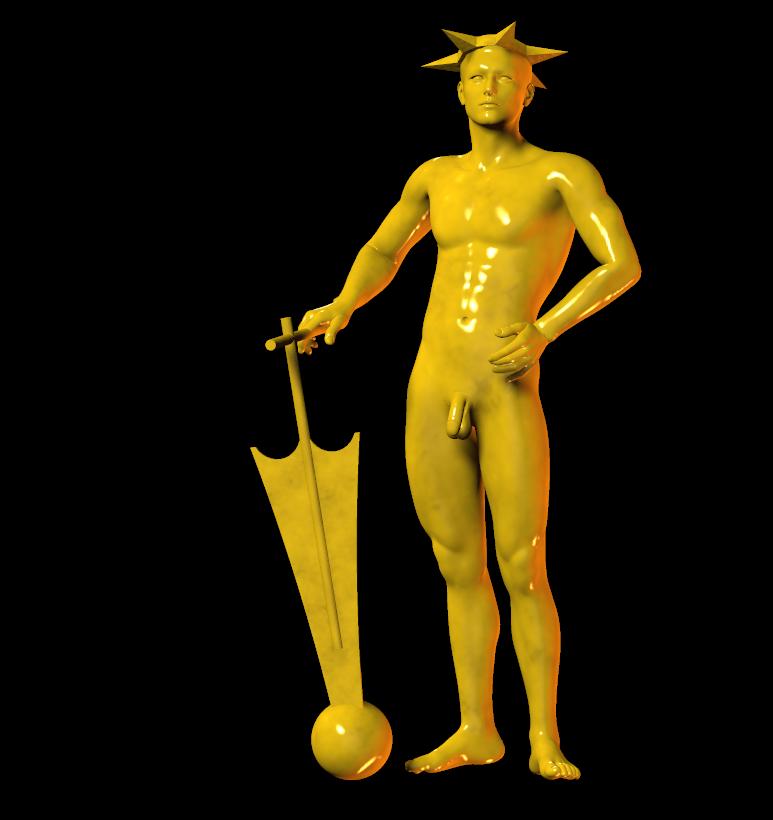
-
RE: Build Rome
I've been trying to start and put toghether the whole set, and it's hellish. I am not, by far, the most orderly person in the world, and I have misplaced bits and pieces, so when I try to hide or show a building it doesn't behave as it should, and then I find that a window that should be in the layer Claudianus is in the layer turris, or that a group contains components that have a bit that should be in another layer ... Setting things straight is much more time consuming than getting them right in the first place, I know, but I do things in a messy way, and I am too old to change. Anyway, the set now is about 11 Mb, and it feels heavy. Gaieus, can I post it or is that too big for the forum?
Then I've been giving a hand for the preparation of the exposition. Here goes an illustration to show the relative position of the two fountains, the oldest one about five meters below the present ground level. The arch of Constantine is there to show the actual position of things.
Then another to show the policies of the Flavians, they reproposed the two monuments that were cherished by romans, but that had not been rebuilt by Nero after the fire: the Meta Sudans and the Curiae Veteres (Old Assembly Hall). Both are of course on higher ground, and off plan, because the road system had been completely redrawn by Nero, and was kept that way afterwards. The new temple was quite small, but very richly decorated.
And I post the invitation to the expo, with SU features that you'll recognize, if somebody is in the area ...


-
RE: Build Rome
On the 21st they will open an exhibition at the U for the 25 years of the excavations of the Meta Sudans, they'll probably use this as invitation and logo ...
I am trying to have something ready, even if my aim was to finalize my work for march 2011, when they'll have an exhibit on Nero in the Coliseum (don't ask me what the Coliseum has to do with Nero ...)
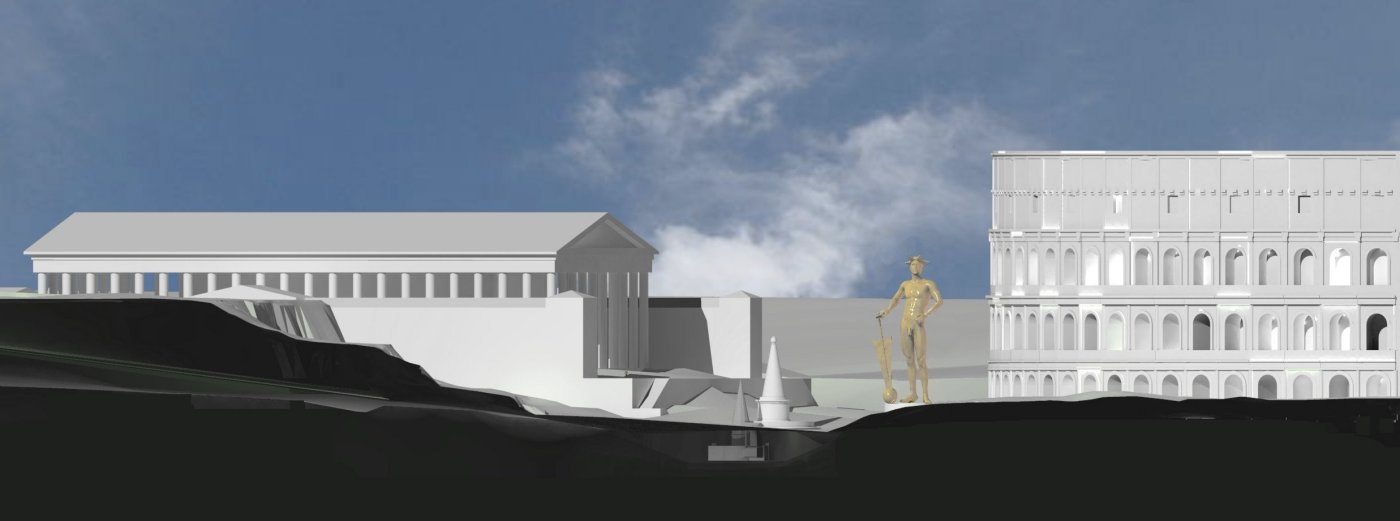
-
RE: Build Rome
Being trying my hand at Poser, importing things from SU. The whole set was done in SU, apart from the plants and pillows. The wall painting is from Pichuneke. Both the map and the wooden model come from SU. The background ruins are from the civil war, Richmond. The idea is to make a short animation with the architect explaining the project to Nero ... What do you think?
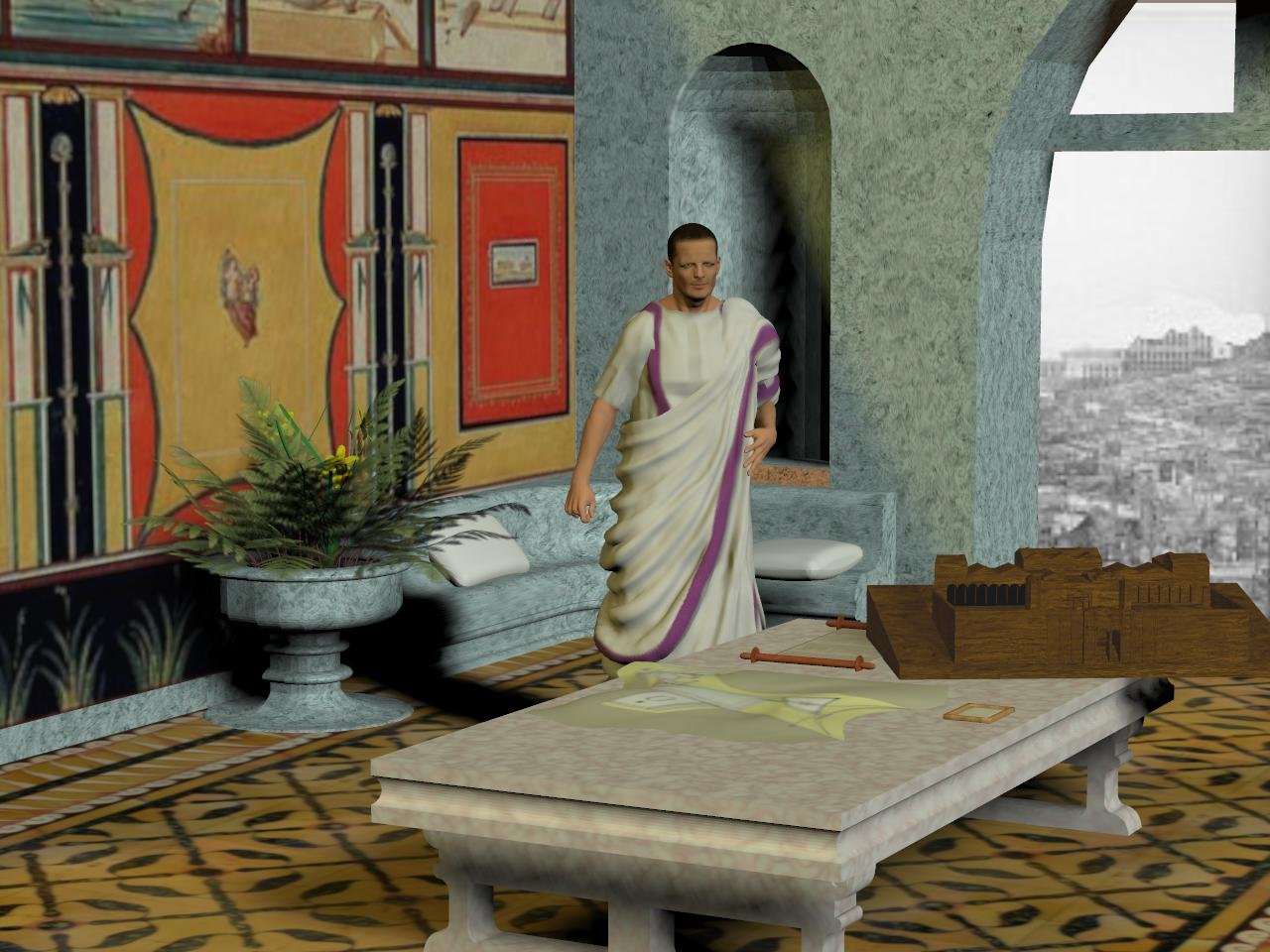
-
RE: Build Rome
Started with the Domus Tiberiana. It's damned huge! 150 x 130 meters approx. ...
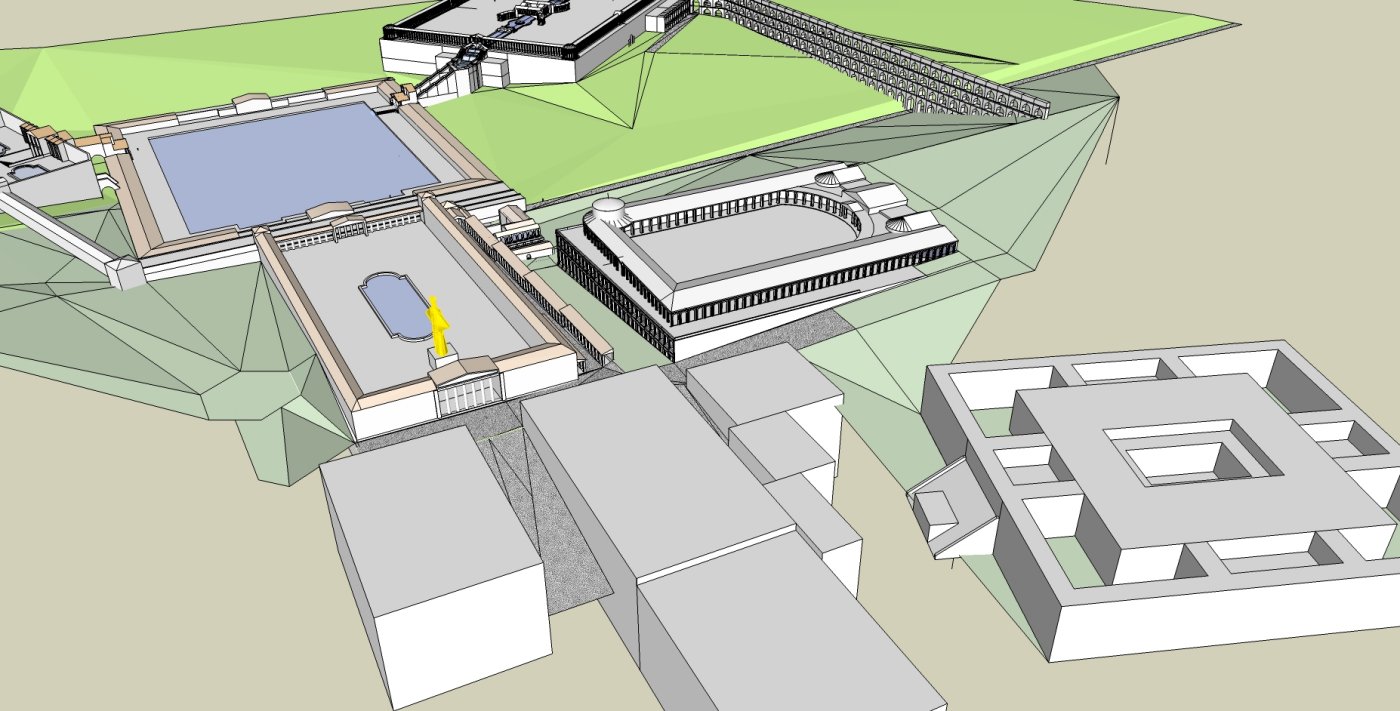
-
RE: Build Rome
Thanks Elysium, I'll probably end up doing it that way. But as You may have seen, I started with the terrain, I have a nice Tin dtm of the present situation, and another with curves and all of 1910, with the Velia hill. But trying to work on those is tricky, each time you position a neronian building or so you realize that the terrain in those times was very different, you have to modify it with the sanbox tool to push up or down, so in the end I gave up. I'll have my terrain only at the end, then I'll clean it up and drape.
I modified my connection between atrium and termae. It looks better, but I think there must have been another building in between, too empty.
In the plan I identified in blue the walls that raised the artificial hill for the connection.
In red some recent finds, a great painted wall and a mosaic wall, that are perfectly aligned with Nero's house, and that I think are neronian, even if the archaeologists responsible for the excavation deny it.
As for the Maxentius sceptres and spears, when Tina found them she didn't know what to make of them, they looked much like XIX century bedpodsts. Only a very patient research showed that oricalcum (a kind of brass we now use for door handles, and yes, bedposts) at the time was rare, used only for coinage or for imperial instruments. That the datation was beginning of third aD, that there were tiny residues of golden embroided silk around the whole pack, that many high officers had power symbols, but only the emperor could have the whole set of sceptres, spears and flagstaffs, etc. So there was no sudden emotion, but a sort of growing excitement.
If I try to remeber a moment of sudden and clear discovery, that was the Meta Sudans of Augustus. Tina had given up looking for it, thought it had been completely destroyed by Nero's works and by the Flavian fountain. And then, on the last day of a campaign, I think it was 2008, there it was, perfectly recognizable, and with enough elements as to attempt a reconstruction ...
